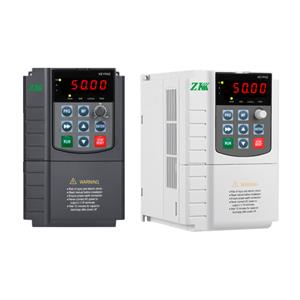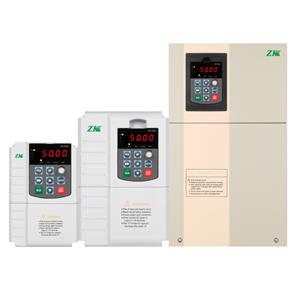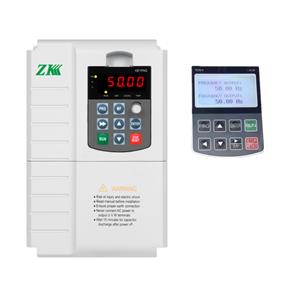Application of General Frequency Converter in Solar Water Pump System
Solar water pump system" is also known as "solar water pump system". Its basic principle is to use semiconductor solar cells to directly convert solar energy into electrical energy, and then drive various motors to drive water pumps to lift water from deep wells, rivers, rivers, lakes, ponds and other water sources. . In some small and medium-power solar water pump systems, DC brushless motors are mostly used as drive motors, but in some high-power solar water pump systems, AC asynchronous motors are also used as drive motors. When the AC asynchronous motor is used as the driving motor, the inverter controller dedicated to the solar water pump is usually used for control.
The composition of solar water pump system
solar water pump system is usually composed of solar solar array (hereinafter referred to as solar array), water pump inverter controller and pump. Its structural block diagram is shown in Figure 1.
Different from our common water pump system that uses AC mains as the power supply, the solar water pump system uses the DC output from the solar solar array as the power supply of the system. The output of the solar array is a strong nonlinear DC power supply, which is greatly affected by meteorological conditions such as sunshine and ambient temperature. In order for the solar water pump system to exert the great potential of the output power of the current solar array under any conditions such as sunshine and ambient temperature, a controller that can achieve a harmonious, efficient and stable working state between the power supply and the load is required. The inverter in Figure 1 realizes this function, mainly to realize MPPT (high power point tracking), inverter and some protection functions. The pump is the actuator of the system, including the drive motor and the water pump, and the system load can be adjusted by adjusting the speed of the pump.
How the system works
The solar array is a non-linear DC power source, which is neither a constant current source nor a constant voltage source, nor can it provide arbitrarily large power to the load. However, under the premise of certain sunshine, the solar array has a large output power point. If the output power of the solar array is the power value corresponding to this point when the system is working, the system is working in a good state at this time. Figure 2 presents the i-v curves of the solar array under different sunshine intensities s.
In the CVT-type MPPT, it can be approximated in engineering that the large output power points (points a, b, c, d, and e in Figure 2) under different sunshine intensities approximate a straight line u=u*=const. That is to say, as long as the solar array keeps its output voltage as u*=const during the operation of the solar water pump system, the solar array can always have high power output under the current sunshine.
Using the inverter to drive the solar water pump to realize the CVT-type MPPT control actually uses the feedback control principle. Under different sunlight intensities, the speed of the motor water pump (that is, the load size) is adjusted by changing the output frequency of the inverter, so as to achieve stability. The purpose of the output voltage of the solar array.
Features:
1: Built-in high-precision solar array large regular point tracking MPPT algorithm dry running state monitoring, processing, to maximize control;
2: Reservoir water level control; the water level detection mechanism sends the water level signal of the well and the reservoir to the control board through the switch contact signal, and controls the start and stop of the inverter according to different water level states.
3: Compatible with both DC/AC inputs; 2 current inputs ensure the normal operation of the system;
4: LED display real-time system status and parameters; real-time control system running status, easy to operate;
5: Real-time remote monitoring system based on RS485;
6: Quick installation design without additional maintenance;
7: Built-in comprehensive protection and diagnosis mechanism.
concluding remarks
Solar water pump system is one of the characteristic application fields in solar applications. The system discussed in this paper is the application of a general inverter in the solar water pump system. The system is simple in composition, easy to debug, and does not require special sampling units and protection units (both are realized by the internal functions of the inverter). Automatic control, very suitable for some remote arid, power-deficient areas.




